Automotive SEO Guide: Get More Customers to Your Dealership

In today’s hyper-competitive automotive market, the vast majority of car buyers don’t start their journey on your lot; they start it on a search engine. They type queries like “used SUV for sale near me,” “best price on a new Ford F-150,” or “Honda service center in [Your City].” If your dealership doesn’t appear prominently in these search results, you are effectively invisible to a massive pool of potential customers. This is where Automotive Search Engine Optimization (SEO) shifts from being a marketing buzzword to a fundamental pillar of your business strategy. It is the engine that powers your digital visibility, ensuring that when local buyers are looking for a vehicle or service you provide, your dealership is the one they find first. This comprehensive guide is designed to demystify automotive SEO. We will break down exactly what it is, explore why it’s non-negotiable for modern dealerships, and provide a roadmap of actionable tactics. From optimizing your local presence to creating compelling content and building a technically sound website, you will learn how to harness the power of SEO to drive more qualified traffic to your website, generate more leads, and ultimately, bring more customers through your showroom doors.
What is Automotive SEO and Why is it a Non-Negotiable for Dealerships?
Before diving into specific tactics, it’s crucial to understand what makes “automotive SEO” different from generic SEO. While the core principles of helping search engines understand and rank your content remain the same, automotive SEO is a specialized discipline finely tuned to the unique behaviors of car buyers and the operational realities of a dealership. It’s not just about ranking for broad terms; it’s about capturing local, high-intent customers at the exact moment they are ready to make a decision.
Defining Automotive SEO
At its heart, automotive SEO is the strategic process of optimizing your dealership’s online presence to rank higher in search engine results for relevant keywords and phrases. This involves a multi-faceted approach that considers your website, your local business listings, your online reputation, and the content you create. Unlike an e-commerce store that can sell to anyone, anywhere, a dealership’s success is tied to its geographic location. Therefore, automotive SEO has a heavy emphasis on local search, aiming to dominate results for queries that include location modifiers (e.g., “in Houston”) or have implicit local intent (e.g., “car dealerships near me”). It focuses on optimizing the pages that matter most to your bottom line: Vehicle Detail Pages (VDPs), Vehicle Listing Pages (VLPs), service center pages, and financing applications.
The Modern Car Buyer’s Journey
The days of customers visiting multiple dealerships in a single weekend to browse are fading fast. Research shows that over 90% of car buyers conduct online research before ever stepping foot in a showroom. They compare models, read reviews, search inventory, and look for local dealers all from their computer or smartphone. This digital-first journey means your website is your new showroom, and your search engine ranking is your new curb appeal. If you’re not on the first page of Google, you’re essentially located on a digital backroad with no traffic. A strong SEO strategy builds the trust and authority needed to attract these savvy online shoppers. When your dealership consistently appears at the top of search results with helpful information, positive reviews, and an easy-to-navigate website, you establish credibility long before a customer ever speaks to a salesperson.
Mastering Local SEO: Your Dealership’s Digital Front Door
For a car dealership, local SEO isn’t just a part of the strategy—it is the strategy. Your customers are in your community. The goal is to ensure that when someone in your geographic area searches for a car or service you offer, your dealership is the most visible and appealing option. The cornerstone of this effort is the Google Business Profile (GBP).
Optimizing Your Google Business Profile (GBP)
Think of your GBP listing as your digital front door. It’s often the very first interaction a potential customer has with your dealership in search results, appearing in the coveted “Map Pack” and local finder. An incomplete or inaccurate profile is a red flag to both Google and customers. To dominate local search, a fully optimized GBP is essential. Here’s a checklist:
- Complete and Accurate Information: Ensure your dealership’s Name, Address, and Phone Number (NAP) are exactly correct and consistent everywhere online.
- Choose the Right Categories: Select primary and secondary categories accurately. Your primary category should be “Car Dealer,” but add others like “Used Car Dealer,” “Truck Dealer,” or “[Brand] Dealer” if applicable.
- Upload High-Quality Photos and Videos: Show off your inventory, your clean and modern showroom, your service bays, and your friendly staff. Regular photo uploads signal to Google that your profile is active.
- Use Google Posts: Treat this like social media for your GBP. Announce new inventory arrivals, post about current promotions, highlight service specials, or introduce a new team member.
- Encourage and Respond to Reviews: Actively solicit reviews from happy customers. More importantly, respond to every single review—positive or negative. This shows you value customer feedback.
- Answer Questions in the Q&A Section: Proactively add and answer common questions about financing, trade-ins, service hours, or specific models. This builds a helpful resource directly on your profile.
Building Local Citations and Managing NAP Consistency
Beyond Google, search engines look for mentions of your dealership across the web to verify your location and legitimacy. These mentions, called citations, are listings of your dealership’s NAP on other websites and online directories. It is absolutely critical that this information is 100% consistent across every platform. Inconsistencies can confuse search engines and damage your local ranking authority. Focus on getting listed in relevant automotive and local directories, such as:
- Yelp
- Cars.com
- Edmunds
- DealerRater
- Yellow Pages
- Your local Chamber of Commerce
Using a citation management tool can help automate the process of finding and fixing inconsistent listings, saving you time and ensuring your digital footprint is clean and authoritative.
On-Page SEO: Optimizing Your Dealership Website for Search Engines and Users
Once your local foundation is solid, the next step is to optimize the pages of your actual website. On-page SEO involves structuring your site’s content and HTML source code to clearly communicate to search engines what each page is about. This ensures you rank for the right keywords and provide a great user experience that encourages visitors to take action.
Keyword Research for the Automotive Industry
Effective on-page SEO starts with knowing what your customers are searching for. Keyword research is the process of identifying these terms. You need to target a mix of keyword types:
- Transactional Keywords: These show a clear intent to buy. Examples include “buy used Toyota Camry,” “new Jeep Wrangler lease deals [city],” or “Chevy Silverado for sale near me.”
- Informational Keywords: These are used by buyers in the research phase. Examples are “Honda CR-V vs. Toyota RAV4,” “what is the towing capacity of a Ram 1500,” or “are certified pre-owned cars worth it.”
- Local Keywords: These explicitly target your service area. For example, “Ford service center in [city],” “used truck dealership [neighborhood],” or “best place to sell my car in [state].”
- Long-Tail Keywords: These are longer, more specific phrases that often have lower competition but very high intent, such as “used white Honda Pilot EX-L with leather seats under $30,000.”
Tools like Google Keyword Planner, Ahrefs, and SEMrush can help you discover these keywords and understand their search volume and competitiveness.
Optimizing Key Pages on Your Site
With your keywords in hand, you can begin optimizing the most important pages on your dealership’s website.
- Vehicle Detail Pages (VDPs): These are your digital money-makers. Each VDP’s title tag must be unique and descriptive (e.g., “Used 2021 Toyota Tacoma TRD Off-Road for Sale in [City, ST]”). Write a unique, compelling description for each vehicle instead of relying on generic manufacturer text. Use high-resolution photos and videos, and make sure every image has descriptive alt text.
- Vehicle Listing Pages (VLPs): These are the category pages for your inventory (e.g., Used SUVs, New Sedans, Ford Trucks). Optimize the title tags and headings to reflect the category, and write a brief introductory text to provide context for search engines.
- Service & Parts Pages: Don’t just have one “Service” page. Create dedicated pages for your most popular and profitable services, such as “Oil Change Service,” “Brake Repair,” and “Tire Center.” Optimize each page for keywords related to that specific service and your location.
- Model Research Pages: Create dedicated “hub” pages for the popular models you sell. These pages can feature specs, trim level comparisons, photo galleries, and reviews. This captures buyers who are still in the research phase and establishes your dealership as an expert resource.
Content Marketing: Fueling Your SEO Engine
A website with just inventory and service pages is static. To truly excel at automotive SEO, you need to create fresh, valuable content that answers your customers’ questions and establishes your dealership as a trusted authority. This is the role of content marketing, and it’s what separates the top-ranking dealerships from the rest.
Beyond Sales Pages: Building Authority with a Blog
A dealership blog is one of the most powerful SEO tools at your disposal. It allows you to target a wide range of informational keywords that you can’t address on your main sales pages. A consistently updated blog signals to Google that your site is active and relevant. More importantly, it provides genuine value to potential customers, building trust and keeping your dealership top-of-mind. Consider creating content around topics like:
- Vehicle Comparisons: “Ford Explorer vs. Jeep Grand Cherokee: Which is the Best Family SUV?”
- Financing Guides: “5 Tips for Securing a Car Loan with Bad Credit in [State].”
- Maintenance Tips: “How to Know When Your Brakes Need Replacing.”
- Local Guides: “The Top 3 Scenic Drives to Take This Fall Near [City].”
- Community Spotlights: “Why We’re Proud to Sponsor the [Local High School] Football Team.”
Each post is an opportunity to rank for new keywords, earn backlinks, and demonstrate your expertise and community involvement.
The Power of Video and Visual Content
Car buying is a visual experience. Customers want to see the cars they are interested in. Video content is incredibly engaging and can significantly boost your SEO efforts. YouTube is the world’s second-largest search engine, and optimizing videos there can drive traffic to your website. Simple, authentic videos can have a huge impact. Ideas include:
- Vehicle Walkarounds: A salesperson gives a detailed tour of a new or popular used model, pointing out key features.
- Test Drive Videos: Use a GoPro to give viewers a first-person perspective of what it’s like to drive a specific car.
- Service Department “How-To”s: A technician can explain a simple maintenance task, like how to check your oil or tire pressure.
- Customer Testimonials: A short video of a happy customer talking about their positive experience is far more powerful than a written review.
Embed these videos on the relevant pages of your website—walkarounds on VDPs, testimonials on the homepage—to increase user time-on-page, a positive signal to Google.
Technical SEO: Ensuring Your Site is Built for Speed and Crawlability
You can have the best content and local profiles in the world, but if your website is slow, broken, or difficult for search engines to crawl, your SEO efforts will be wasted. Technical SEO is the foundation upon which all other strategies are built. It ensures your site provides a seamless experience for both users and search engine bots.
Mobile-First is a Must
The majority of automotive-related searches now happen on mobile devices. Because of this, Google uses the mobile version of your website for indexing and ranking (this is called mobile-first indexing). Your website must be fully responsive, meaning it looks and works perfectly on any screen size, from a desktop monitor to a smartphone. Key information like your phone number (with click-to-call functionality), address (linked to a map), and hours of operation should be immediately accessible on mobile without pinching or zooming.
Site Speed and Core Web Vitals
Website speed is a confirmed ranking factor. A slow-loading page frustrates users and leads to a high bounce rate. Google’s Core Web Vitals are a set of specific metrics that measure the user experience in terms of loading speed, interactivity, and visual stability. While the technical details can be complex, the goal is simple: your website needs to be fast. You can achieve this by:
- Compressing all images before uploading them to your site.
- Choosing a high-quality web hosting provider.
- Limiting the use of pop-ups and heavy animations that slow down loading.
- Using a tool like Google’s PageSpeed Insights to identify and fix speed-related issues.
Schema Markup for Dealerships
Schema markup is a type of code you add to your website to help search engines better understand the context of your content. For dealerships, this is a powerful tool. By using specific schema types, you can tell Google exactly what an element on your page is. For example, you can mark up your inventory with “Car” schema, your business information with “AutomotiveBusiness” schema, and your customer reviews with “Review” schema. This can help you earn “rich snippets” in the search results—things like star ratings, price ranges, and stock status appearing directly under your listing. These enhanced listings are more eye-catching and can dramatically increase your click-through rate.
Off-Page SEO: Building Your Dealership’s Reputation Across the Web
Off-page SEO refers to actions taken outside of your own website to impact your rankings within search engine results pages. It’s largely about building your dealership’s authority, credibility, and reputation. The two primary pillars of off-page SEO for dealerships are earning backlinks and managing your online reputation.
The Art of Earning High-Quality Backlinks
A backlink is a link from another website to yours. Search engines view backlinks as votes of confidence. If a reputable website links to your dealership, it signals to Google that you are a trustworthy resource. The key here is quality over quantity. A single link from a well-respected local news site is worth more than a hundred links from low-quality directories. Proactive link-building strategies for dealerships include:
- Local Sponsorships: Sponsor a local charity 5K, a youth sports team, or a community festival. In return, ask for a link back to your website from their partners or sponsors page.
- Host a Community Event: Host a “new driver safety clinic” or a “classic car show” at your dealership. Promote the event to local media and bloggers, which can result in coverage and valuable links.
- Create a Local Scholarship: Offer a small scholarship to a graduating senior from a local high school who is pursuing a career in automotive technology or a related field. This is a fantastic way to earn .edu links, which are highly valued by Google.
- Partner with Local Businesses: Work with complementary, non-competing businesses like auto detailers, repair shops, or insurance agents. You can cross-promote each other and link to each other’s websites as trusted partners.
Reputation Management and Online Reviews
Your online reputation is inextricably linked to your SEO performance. Search engines want to show their users the best, most-trusted local businesses, and online reviews are a primary indicator of that trust. As mentioned in the local SEO section, reviews on your Google Business Profile are critical, but so are reviews on other major platforms like DealerRater, Cars.com, and Yelp. A comprehensive reputation management strategy involves:
- Systematically Asking for Reviews: Implement a process to ask every satisfied sales and service customer to leave a review. This can be done via email or SMS follow-up.
- Monitoring Your Reputation: Use tools to monitor mentions of your dealership and new reviews across all relevant platforms so you can respond quickly.
- Responding to All Reviews: Thank customers for positive reviews. For negative reviews, respond publicly with empathy and professionalism, and offer to take the conversation offline to resolve the issue. How you handle criticism is a powerful signal to potential customers.
Conclusion: Driving Your Dealership Forward with SEO
Navigating the world of automotive SEO can seem complex, but its importance cannot be overstated in a digital-first marketplace. It is the most effective and sustainable way to connect with the modern car buyer. By embracing a holistic strategy, you can transform your online presence from a simple digital brochure into a powerful lead-generation machine. We’ve covered the essential pillars: laying a strong foundation with meticulous local SEO and Google Business Profile optimization; building out your website with smart on-page SEO focused on user intent and key pages like VDPs; fueling your authority with valuable content marketing through blogs and videos; ensuring a flawless user experience with solid technical SEO; and expanding your reputation across the web with off-page link building and review management. Remember, automotive SEO is not a one-time setup; it’s an ongoing race. It requires consistent effort, monitoring, and adaptation to changes in search engine algorithms and consumer behavior. By committing to these principles and patiently implementing these actionable tactics, your dealership won’t just compete online—it will dominate. You will drive more qualified traffic, generate higher quality leads, build a trusted brand in your community, and ultimately, sell more cars. The road to the top of the search results is paved with strategy and persistence, and your journey starts today.


 Search ads
Search ads Mobile ads
Mobile ads